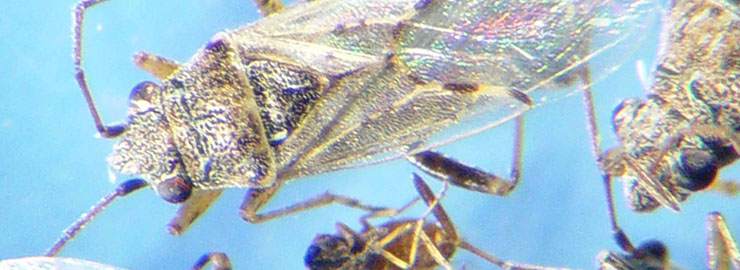Chinch bugs are most damaging to Floratam Grass. You may see them on grasses such as zoysia, Bermuda, and centipede, but infestations usually occur where high populations have built up on St. Augustine grass. Adult chinch bugs are about one-fifth of an inch long and black with white wings folded over their backs. The insect mates early in the season when the temperature reaches 70 degrees Fahrenheit. The female lays eggs on roots, stems, leaves, leaf sheaths or crevices in nodes and other protected places. Eggs are laid over a 2 to 3 week period, with one female laying as many as 500 eggs.
The young chinch bugs ( called nymphs) develop into adults in four to six weeks. Nymphs are yellow upon hatching but soon turn red and have a light colored band across their abdomens. With each molt, nymphs more closely resemble the adults. There are 2 to 4 generations per year. The chinch bugs insert their slender beak into the grass and suck the plant juices. As the chinch bug sucks the plant juices, it releases a toxin that causes yellowish to brownish patches in turf. Typical injury appears as spreading patches of brown, dead grass. This pest is a sunshine-loving insect and seldom attacks grass in a dense shady area. Discolored areas caused by chinch bug feeding that are in open sunlight several hours daily may be “hot spots” for chinch bug damage. Most homeowners will first notice dead patches of grass along a driveway, curb, sidewalk or foundation of the home, due to the heat emitted from such objects. Because they can fly, it is difficult to keep an area free of chinch bugs if they are emerging from neighboring lawns, golf courses or nearby croplands

